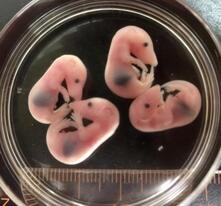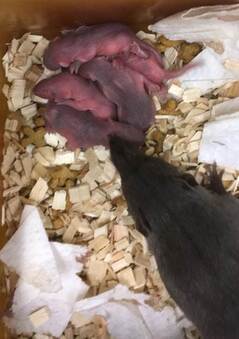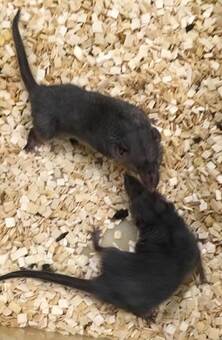Asian Musk Shrew (Suncus murinus)
Common laboratory animals including mice and rats do not have the capacity to vomit and therefore have poor translational value in anti-emetic research. Suncus murinus is very often used in our laboratory because they are capable of vomiting. Like humans, they also produce motilin in the stomach to control gastric contractions. We currently have projects studying the anti-emetic effects of ghrelin, gut dysrhythmia, motion sickness, as well as genomic projects using the Suncus murinus as animal model.


